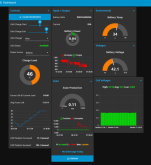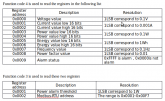A J
New Member
- Joined
- Sep 21, 2019
- Messages
- 79
Do you have the classic register map?I started tinkering with Raspi, Node Red, Grafana & InfluxDB using Modbus -> IP to my Midnite Classic-200 controller and I just got the latest MODBUS specs & info for my Samlex EVO-4024 Inverter (not released publicly). I posted an initial setup here at Midnite: http://midniteftp.com/forum/index.php?board=73.0 feel free to peruse and use anything handy there.
This is a "winter" project which I will be working on, once the ground is covered and I'm tired of having a frozen face. (Dang Canadian Winters !)
I am a member of the MidNite Forum as well!
My controller is not a Classic, but is a MidNite product, took me several attempts to figure out it was not MODBUS... "Classic is"






